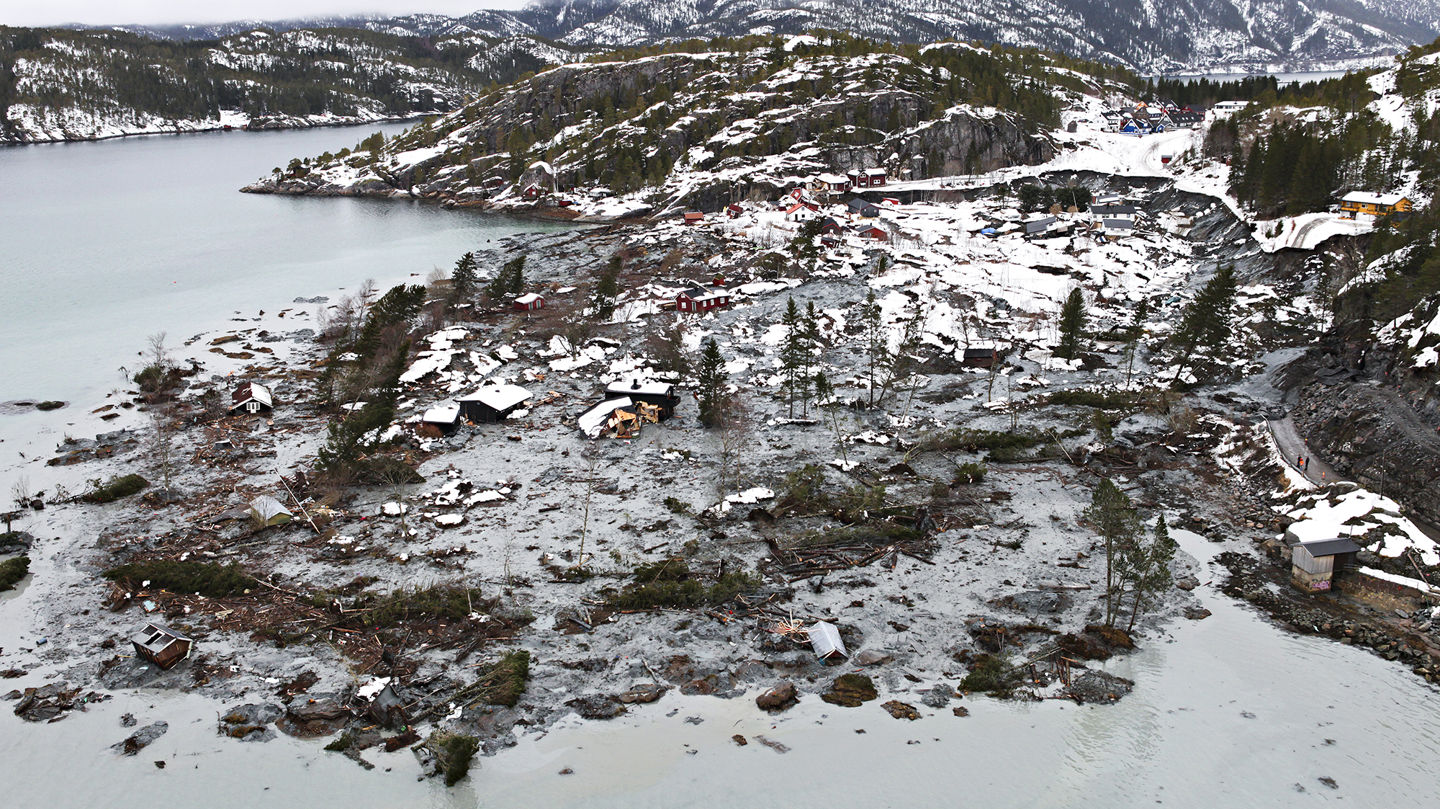Quick clay landslides

Quick clay differs from other clays in that the clay was originally deposited below sea level, and that the salt from the seawater over time has been washed out of the clay after the land uplift from the last ice age. This gives the clay an instable structure that makes it almost floating like a liquid when overloaded.
Quick clay landslides therefore develop very quickly and often over large areas, even in quite flat terrain. It develops retrogressively, which means it starts at the bottom and goes backwards in the terrain as the quick clay is overloaded when the clay below has collapsed. The landslide masses flow down along the terrain.
NGI performs the following services related to quick clay:
- Mapping of the degree of danger, consequence and risk of quick clay landslides
- Ground investigations and stability assessments
- Design and assessment of mitigation measures
- Assistance and advice related to acute landslide situations, including searches and acute hazard assessments for surrounding areas after landslides
- Courses and dissemination of knowledge to municipal authorities and other relevant agencies
- Investigation of landslide accidents and landslide incidents.
The Quick Clay Landslide at Rissa 1978

Håkon Heyerdahl
Head of Section Slope Stability and Risk Assessment Slope Stability and Risk Assessment hakon.heyerdahl@ngi.no+47 951 25 767

Jean-Sébastien L'Heureux
Head of Section Natural Hazards - Trondheim Natural Hazards - Trondheim jean-sebastien.lheureux@ngi.no+47 971 20 860